This time, we’re introducing Ojisan ga Naze ka Kawaii—a workplace comedy that lets you study real Japanese business etiquette while laughing at the unexpected cuteness of an unsmiling boss.
Work Information
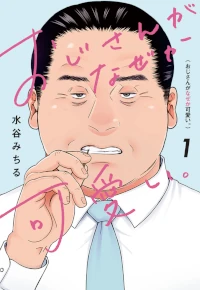
Ojisan Ga Naze Ka Kawai. (おじさんがなぜか可愛い。)
Author: Mizutani Michiru
Publisher: SHUEISHA
Amount of text: moderate
Challenge level: ★★
Latest volume : Vol.3(Apr.2024 / Completed)
Story overview
When Asaki starts her first job after graduation, she’s assigned to be trained by her stern, unsmiling boss—a middle-aged man who seems scary and hard to approach. But the more she gets to know him, the more she finds him… adorable!? This is the first volume of a workplace comedy about observing the “cuteness” of ordinary middle-aged men.
The Appeal of This Manga
Through the eyes of Asaki, a young new employee, we see the surprisingly endearing habits of her boss, Section Chief Onomoto. Despite his gruff appearance, he secretly loves sweets, has surprisingly nice legs, and even cries easily. Asaki can’t help but find these traits cute. In Japan, “ojisan - おじさん” (middle-aged men) are usually considered the opposite of “kawaii.” This manga flips that idea on its head, combining the unexpected gap with a comical art style to create a truly unique comedy.
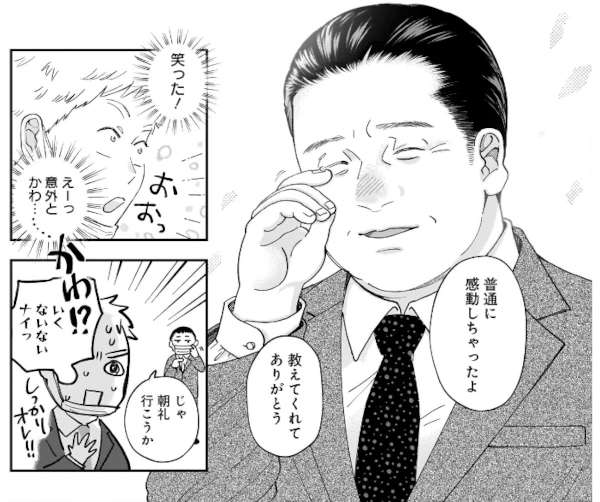
Why this manga is suitable for learning Japanese
This manga is not only entertaining but also highly recommended for Japanese learners for several reasons.
Plenty of business scenes
Since the main characters are a boss and his subordinate, most of the story takes place in an office setting. This makes the manga rich with authentic examples of formal workplace Japanese, especially honorific and polite speech.
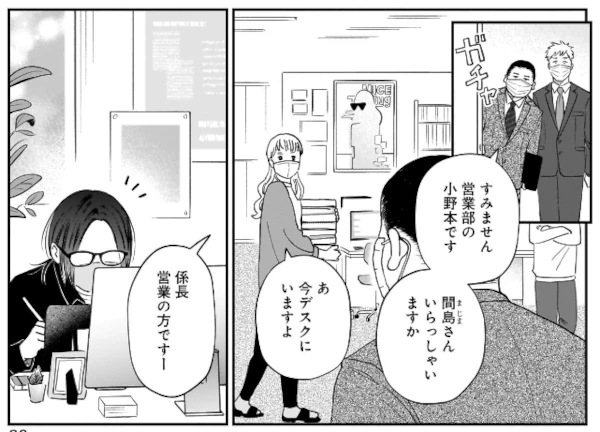
Realistic workplace relationships
The manga carefully depicts various dynamics within a Japanese company—between boss and subordinate, coworkers, seniors and juniors, or employees from other departments. Learners can pick up on subtle differences in tone and nuance across these relationships.
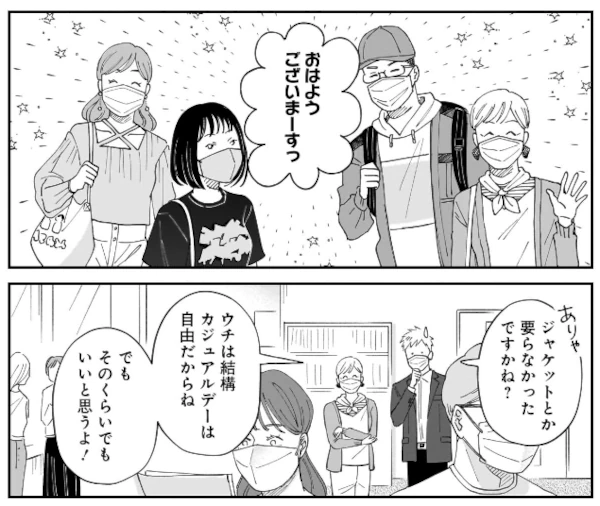
Culture Spotlight
“Ojisan”: The Middle-Aged Man in Japanese Societyおじさん
In Japanese society, the word おじさん (ojisan) literally means “uncle” or “middle-aged man.” But in everyday use, it often carries a negative image. Middle-aged men are stereotypically disliked by teenage daughters, avoided by younger colleagues, and even worried about being mistaken for a groper in crowded trains. In the media, you’ll often hear labels such as:
・子供部屋おじさん (kodo-oji) – “child-room ojisan,” referring to an adult man who still lives with his parents.
・タイミーおじさん (Taimii ojisan) – a term mocking older men using gig-work apps.
・おじさん構文 (ojisan kōbun) – the “uncle text style,” known for long, awkwardly polite, emoji-filled messages.
Together, these stereotypes create an image of the ojisan as socially out of place, pitiful, or even embarrassing.
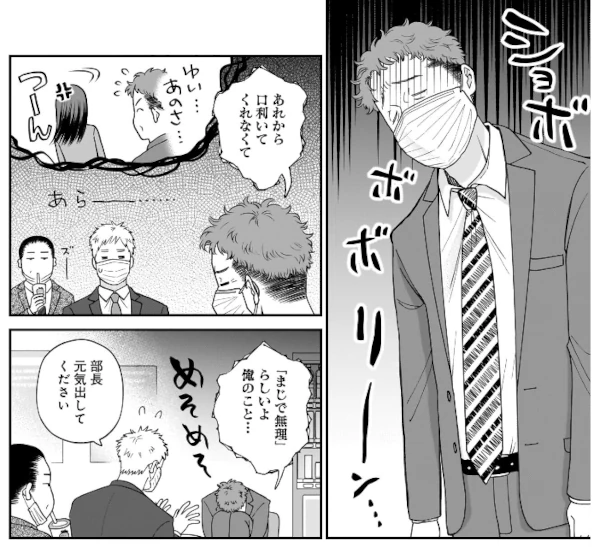
The Stereotypical Ojisan: Habits and Humor
Beyond the negative labels, Japanese pop culture often portrays the ojisan stereotype through a familiar set of behaviors and appearances:
・Appearance: A slightly balding head, a bit of a belly, and unfashionable clothing—often a polo shirt tucked into slacks with a belt.
・Mannerisms: Speaking too loudly on trains, dozing off after drinking, or constantly offering unwanted advice to younger people.
・Technology Use: Struggling with smartphones, or sending “ojisan-style texts” full of emojis, excessive punctuation, and overly formal or outdated phrasing.
・Conversation Topics: Talking nostalgically about the “good old days,” making dad jokes (called おやじギャグ oyaji gyagu), or bragging about past achievements.
While these traits can feel embarrassing or out-of-touch, they also make ojisan an easy target for comedy. For many Japanese, laughing at or gently mocking these stereotypes is part of everyday humor—similar to how “dad jokes” function in English-speaking cultures.
From Background Character to Main Character
Traditionally, ojisan were not seen as protagonists in manga or popular culture. They were side characters—the strict boss, the grumpy neighbor, or the father figure. But in recent years, creators have begun to flip the stereotype. By embracing the ojisan’s awkwardness or ordinariness, they’ve turned him into a main character:
・異世界おじさん (Isekai Ojisan) – a middle-aged man transported to a fantasy world.
・片田舎のおっさん (A Country Uncle) – a rural middle-aged man at the heart of the story.
These works use humor, nostalgia, and unexpected charm to transform the ojisan into a figure worth rooting for.
Why “Ojisan” Matters for Learners
For Japanese learners, ojisan is more than just a word for “uncle.” It reflects how language and culture shape social identity. In Japan, “cute” (かわいい) is usually seen as the opposite of “middle-aged man,” yet some manga now challenge that assumption. Understanding the cultural baggage of ojisan helps learners follow not only manga and TV shows, but also everyday jokes, online slang, and conversations in modern Japan.
A Cultural Shift in Progress
The evolving role of the ojisan mirrors larger shifts in Japanese society—how different generations view each other, how stereotypes are played with, and how humor can transform something negative into something fresh. For learners, keeping an eye on how “ojisan” is used in both serious and playful contexts provides insight into modern Japanese life and its changing values.
A Little Warning
Do you find middle-aged men interesting?
This is a rather unusual theme—celebrating the cuteness of ordinary middle-aged men. If that idea doesn’t click with you, you might not enjoy the manga as much.
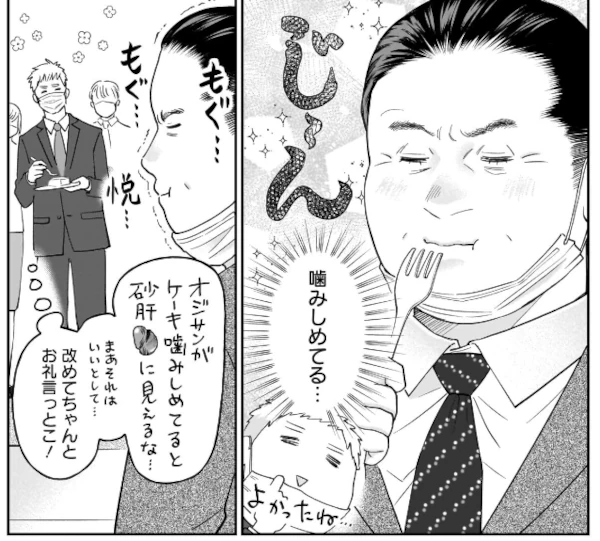
Work Information

Ojisan Ga Naze Ka Kawai. (おじさんがなぜか可愛い。)
Author: Mizutani Michiru
Publisher: SHUEISHA
Amount of text: moderate
Challenge level: ★★
Latest volume : Vol.3(Apr.2024 / Completed)
Here’s a safe and convenient way to purchase Japanese manga.
This Blog’s ConceptIn this blog, we are introducing manga that are not only highly captivating but also ideal for Japanese language learners. Studying Japanese through manga is both fun and effective. Manga allows you to understand the subtleties of keigo (honorifics), teineigo (polite speech), and casual conversation in Japanese. We hope you find works that match your interests and use them to enhance your Japanese learning journey.